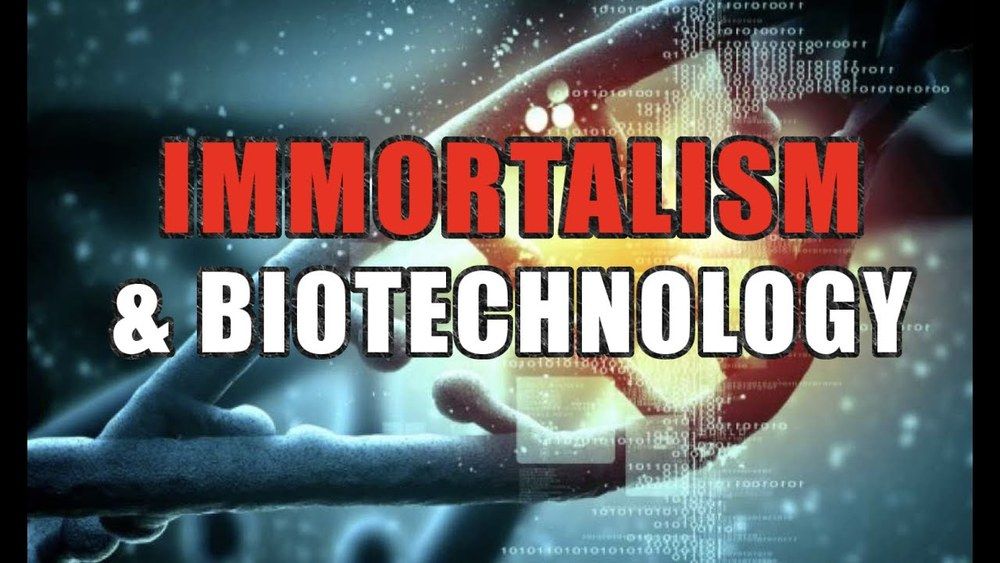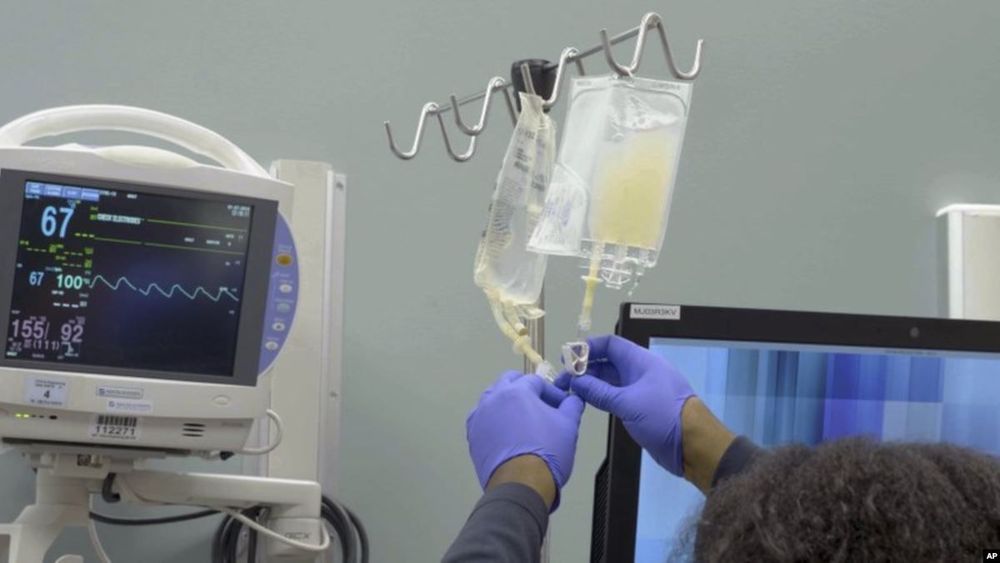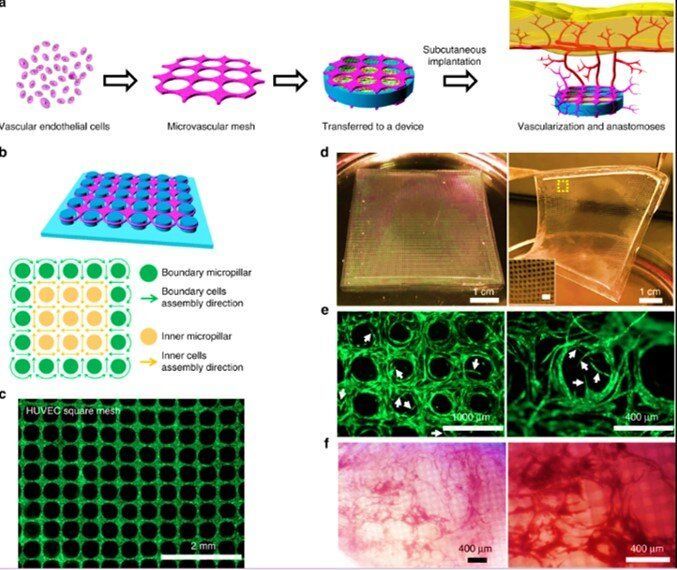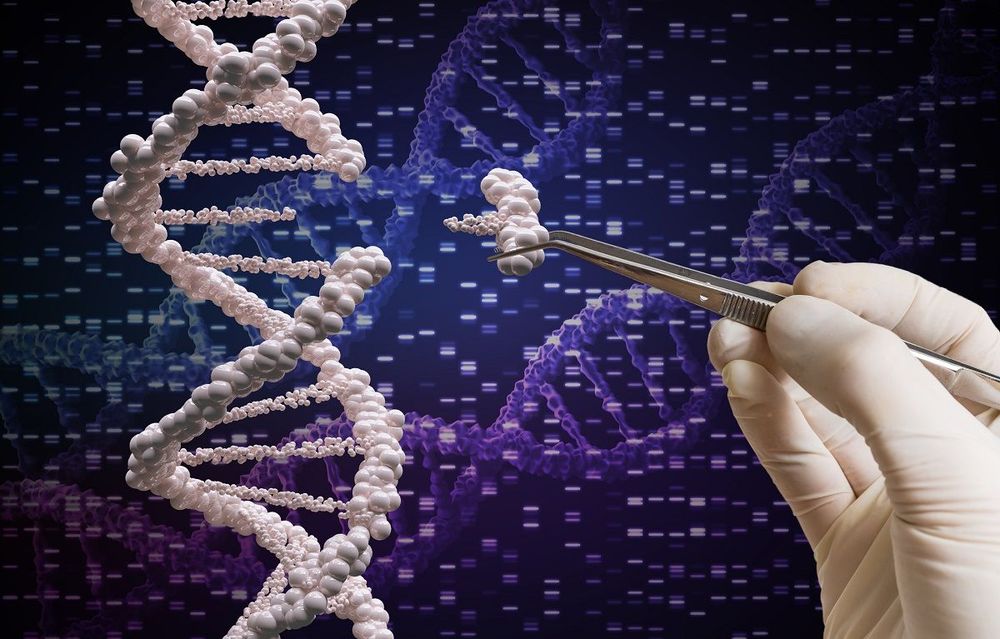Archive for the ‘bioengineering’ category: Page 125
Nov 17, 2019
Cryonics Institute President Dennis Kowalski — ideaXme — Ira Pastor
Posted by Ira S. Pastor in categories: aging, bioengineering, bioprinting, biotech/medical, business, cryonics, futurism, health, life extension, posthumanism

Nov 15, 2019
This wristband tells you what food to buy based on your DNA
Posted by Genevieve Klien in categories: bioengineering, biotech/medical, food, genetics, health

When an undiagnosed rare genetic disease caused his young son’s kidneys to fail, Professor Chris Toumazou vowed to find a way of uncovering hidden health risks.
The professor of biomedical engineering realised that, although his son’s condition could not have been prevented, the family could have managed his lifestyle very differently had they known about his condition.
Continue reading “This wristband tells you what food to buy based on your DNA” »
Nov 14, 2019
Doctors Report First US Tests of Gene Editing for Cancer
Posted by Quinn Sena in categories: bioengineering, biotech/medical, genetics
Doctors have reported on the first attempts in the United States to use gene editing to help patients fight cancer.
The doctors say one form of gene editing appeared to be safe when tested in three patients. But it is not yet known what long-term effects the method will have on cancer treatment or patient survival rates.
A gene editing tool called CRISPR/Cas9 was used in the tests, which were recently reported in a medical study. The method was discovered in recent years as a way to change the genetic material that make up a person’s DNA.
Nov 14, 2019
Engineering biomimetic microvascular meshes for subcutaneous islet transplantation
Posted by Saúl Morales Rodriguéz in categories: 3D printing, bioengineering, biotech/medical
To successfully engineer cell or tissue implants, bioengineers must facilitate their metabolic requirements through vascular regeneration. However, it is challenging to develop a broad strategy for stable and functional vascularization. In a recent report on Nature Communications, Wei Song and colleagues in the interdisciplinary departments of Biological and Environmental Engineering, Medicine, Mechanical and Aerospace Engineering, Clinical Sciences and Bioengineering in the U.S. described highly organized, biomimetic and resilient microvascular meshes. The team engineered them using controllable, anchored self-assembly methods to form microvascular meshes that are almost defect-free and transferrable to diverse substrates, for transplantation.
The scientists promoted the formation of functional blood vessels with a density as high as ~200 vessels per mm-2 within the subcutaneous space of SCID-Beige mice. They demonstrated the possibility of engineering microvascular meshes using human induced pluripotent stem-cell (iPSCs) derived endothelial cells (ECs). The technique opens a way to engineer patient-specific type 1 diabetes treatment by combining microvascular meshes for subcutaneous transplantation of rat islets in SCID-beige mice to achieve correction of chemically induced diabetes for 3 months.
Vasculature is an essential component of any organ or tissue, and vascular regeneration is critical to successfully bioengineer implants. For instance, during cell replacement therapy for type 1 diabetes (T1D), transplanted insulin producing cells rely on the vasculature to function and survive. Bioengineers often use vascular endothelial cells such as human umbilical vein endothelial cells (HUVECs) to spontaneously assemble into tubular structures within the extracellular matrix (ECM). But the resulting structures can be random, uncontrollable and less efficient for microvascular regeneration. Scientists have recently developed three-dimensional (3D) printing techniques to engineer controlled cellular constructs with embedded vessels. However, it remains challenging to 3D print resilient and transferrable, high-resolution, microvasculature.
Nov 14, 2019
Scientists Create New, More Powerful Technique To Edit Genes
Posted by Paul Battista in categories: bioengineering, biotech/medical, health
Prime Editing, A New Gene Editing Technique May Offer Improvement Over CRISPR : Shots — Health News A new technique, dubbed ‘prime editing,’ appears to make it even easier to make very precise changes in DNA. It’s designed to overcome the limits of the CRISPR gene editing tool.
Nov 13, 2019
Can we Live Forever? (Full Documentary)
Posted by Paul Battista in categories: 3D printing, bioengineering, bioprinting, biotech/medical, cryonics, economics, education, ethics, genetics, law, life extension, nanotechnology, singularity

TABLE OF CONTENTS —————
0:00–17:57 : Introduction (Meaning of Life)
17:58–37:45 CHAPTER 1: Longevism and Life Extension
—————————————————————————————–
WHY DOES AGING HAPPEN?
—————————————————————————————–
37:46–54:39 CHAPTER 2 : Gerontonology and Aging a. Free Radical Theory of Aging b. Waste Accumulation Theory of Aging c. Stem Cell Theory of Aging d. DNA Damage Theory of Aging.
—————————————————————————————–
HOW DO WE CURE AGING?
—————————————————————————————–
54:39–1:08:39 : CHAPTER 3 :The Biochemical Solution (#1)
a. mitoSENS
b. oncoSENS
c. lysoSENS
d. amyloSENS
e. apoptoSENS
f. repliSENS
g. glycoSENS
1:08:40–2:13:12 CHAPTER 4 : The Physiological Solution (#2)
a. Parabiosis and Biovampirism b. Regeneration and Stem Cells c. Lab Grown Organs and Bioprinting d. Head Transplants and Doppleganger Bodies.
2:13:12–2:33:19 CHAPTER 5 : The Genetic Solution (#3)
a. TALEN genetic engineering b. Zinc-Finger gene tailoring c. CRISPR-Cas9 gene editing.
—————————————————————————————–
WILL WE CURE AGING GENETICALLY?
—————————————————————————————–
2:33:20–2:49:58 : CHAPTER 6 : Genomics and DNA
2:49:59–3:05:48 : CHAPTER 7 : Transcriptomics and RNA
3:05:49–3:22:08 : CHAPTER 8 : Proteomics and TNA
3:22:09–3:39:38 : CHAPTER 9 : Xenobiology and XNA
a. alien proteins b. alien base pairs c. alien DNA
3:39:39–3:54:58 : CHAPTER 10 : Vectors and Gene Therapy (Gene Editing #1)
3:54:59–4:14:57 : CHAPTER 11 : Synthetic Biology (Gene Editing #2)
4:14:58–4:32:14 : CHAPTER 12 : Chimeras, Rianths, and Splices (Gene Editing #3)
4:32:15–4:48:35 : CHAPTER 13 : Ouroborology and Immortal Chimeras (Gene Editing #4)
4:48:36-:5:03:52 : CHAPTER 14 : Kleptoplasty and Photosynthesis (Gene Editing #5)
—————————————————————————————-
HOW TO SURVIVE UNTIL AGING IS CURED
—————————————————————————————-
5:03:53–5:14:27 : CHAPTER 15 : Survive to the Singularity a. the breakeven point b. longevity escape velocity c. the longevity dividend.
5:14:28–5:30:16 : CHAPTER 16 : Centennarians and Blue Zones (Survival Method #0)
a. loma linda b. ikaria c. sardinia d. okinawa.
5:30:17–5:42:26 : CHAPTER 17 : Risk Aversion and Micromorts (Survival Method #1)
a. micromorts
b.microlives
5:42:27–5:58:18 : CHAPTER 18 : Nutraceuticals and Geroprotectors (Survival Method #2)
a. rapamycin b. metformin c. selegilene d. nicotinamide riboside e. resverratrol.
5:58:19–6:12:51 : CHAPTER 19 : Caloric Restriction (Survival Method #3)
a. endocrine b. epigenetic c. genetic
6:12:52–6:51:57 : CHAPTER 20 : Cryonics & Cryogenics (Survival Method #4)
a. the efficacy question b. the cost question c. the resurrection question d. the identity question e. the legal question f. the catastrophe question g. the culture question.
—————————————————————————————–
CAN WE BE IMMORTAL WITHOUT CURING AGING?
—————————————————————————————–
_______________________________________________________
6:51:58–7:04:08 : CHAPTER 21 : Genetic Immortality — Test Tube Babies
7:04:09–7:24:02 : CHAPTER 22 : Genetic Immortality — Designer Babies
7:24:03–7:41:55 : CHAPTER 23 : Genetic Immortality — Clone Babies
7:41:56–7:53:08 : CHAPTER 24 : Genetic Immortality — Artificial Wombs
7:53:08–7:53:09 CHAPTER 25 : Immortalism and Ethics a. the crime argument b. the natural argument c. the boredom argument d. the inequality argument e. the overpopulation argument f. the gerontocracy argument g. the economic argument h. EPILOGUE
Patreon https://www.patreon.com/transhumania
Continue reading “Can we Live Forever? (Full Documentary)” »
Nov 12, 2019
How Gene Therapy can Help You Stop Aging, Build Muscles, and Fight Diseases
Posted by John Davies in categories: bioengineering, biotech/medical, education, genetics, life extension

On this episode of Anti-Aging Hacks show, we get into the following topics:
1. What is Gene Therapy and how Practical is it?
Continue reading “How Gene Therapy can Help You Stop Aging, Build Muscles, and Fight Diseases” »
Nov 11, 2019
Why Designing Our Own Biology Will Be the Next Big Thing in Medicine
Posted by Paul Battista in categories: bioengineering, biotech/medical, genetics
While the public is still imagining the future to be very much like the past, the researchers at the forefront of genetics are planning to redesign human bodies, to make us more long-lived, more resilient to disease, more strong and (I hope) more intelligent.
In a talk at Exponential Medicine, Jane Metcalfe said that tools like gene editing and synthetic biology could make design the next big thing in medicine.













